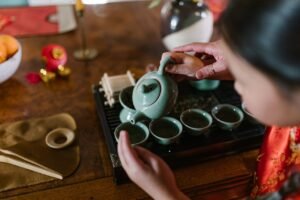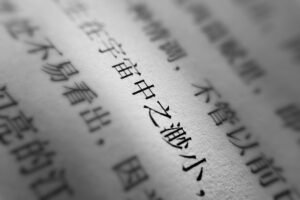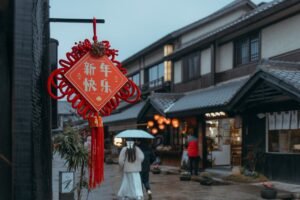Zhōngguó de jiànzhú 中国的建筑 Chinese architecture has a long and exciting history that goes back about 2,500 years to the Zhou era.
People have been making buildings out of wood, earth, stone, and brick since the beginning of Chinese civilization. The buildings were built to be easy to rebuild and to stand up to frequent calamities from dìzhèn 地震 earthquakes, táifēng 台风 typhoons and hóngshuǐ 洪水 floods.
In China, buildings were made to last and be easy to fix. They were also influenced by and supported by social order and religion.
Table of Contents
Toggle
Preference for Lumber Construction Mùcái jiànzhù 木材建筑 Mùcái jiànzhù
China’s culture grew along the Huánghé 黄河 Yellow River and Chángjiāng 长江 Yangtze river. People had to build flexibly because of earthquakes and frequent flooding in the river basins. Wood was used to make most of the buildings.
The dense forests gave people a lot of wood to work with back then. From the Zhou Dynasty until the early modern era, when China started to use Western architecture, most of the characteristics of wooden buildings stayed the same (1045-221 BC).
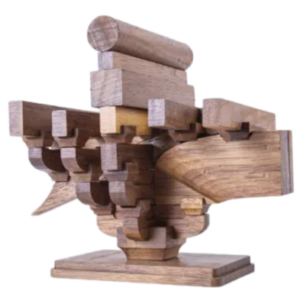
The main components of traditional lumber construction were:
- A stamped earth base.
- Load-bearing timber pillars that were not anchored into the foundation.
- Brackets that were only slightly rigid.
Because of these design features, the flexibility in the buildings made them withstand earthquakes and hurricanes, and they could quickly be rebuilt if damaged.
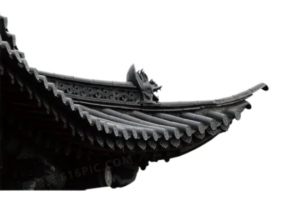
Heavy Overhanging Roofs xuánchuí wūdǐng 悬垂屋顶
Old wooden buildings in China have thick roofs made of ceramic tiles with wide overhangs and edges that are just a little bit rounded. It was essential to the builders that wooden buildings had ceilings over the edges.
Since wood rots much more quickly when wet, this protects the building from the weather. Wide eaves also kept the buildings cool in the summer and warm in the winter.
In China, traditional buildings did not go past the walls to support the roofs. The overhangs may go a few metres past the walls. Even though they are heavy, ceramic tiles have been the most popular way to cover a roof since ancient times.
Earth-filled buildings hāng tǔ jiànzhú 夯土建筑
People constructed clay structures, tǔlóu 土楼, in places like the Hakka villages in Fujian, where the clan’s compound was at risk of being attacked.
In these areas, homes were built inside thick walls made of rammed earth, bricks, and sometimes stone. These walls were set up in a circle and had no windows.
Faces south
There was a good reason for the buildings in China to face south. When taller buildings were added to courtyards in the north and shorter walls facing east and west in the south, the most sunlight could warm the building up in the winter. This was possible when the building was tilted sharply toward the south.
This is something that northern China is known for. This is why the main building’s doors and windows faced south and opened onto an interior courtyard that got sunlight.
So, the main building was built to the north of the courtyard and was home to the family’s older members, who needed warmer places to live in the winter. The servants’ and guards’ living quarters were near the main gate, which was always on the south side of the compound.
If an attacker came in this way, they would first have to pass the servants and guards to get to the apartments for children and younger married couples on either side. The most senior members lived in the building with the best security farthest from the gate.
Chinese Architecture: Layouts with symmetry
The main buildings were protected from the weather and outside attackers by gates or more prominent buildings in the middle of the enclosure surrounded by smaller buildings on all sides.
So, the southern and side buildings helped block the wind and kept arrows and other projectiles from getting into the main building in the north.
Chinese Architecure: Fengshui Design Fēngshuǐ shèjì 风水设计
Fēngshuǐ shèjì 风水 Feng shui is like geomancy. The main ideas of this philosophy tell people where and how to build towns and settlements for the best.
It fits with the Taoist idea that everything should be in harmony. According to Traditional Chinese Medicine, builders thought that by following these rules, they could control the flow of qi energy. People thought these design goals would improve the health, wealth, and happiness of those who lived there.
Related words
jiànzhù 建筑 architecture
dìzhèn 地震 earthquake
táifēng 台风 typhoon
hóngshu 洪水 flood calamities
mùcái 木材 lumber
wūdǐng 屋顶 roof
hāng tǔ 夯土 rammed earth
cháo nán 朝南 south facing
duìchèn 对称 symmetrical
bùjú 布局 layouts
shèjì 设计 design
fēngshuǐ 风水 Fengshui
DO YOU WANT TO LEARN MORE?
You might ask yourself: How to learn Chinese? Whwat is the best way to learn Chinese? One effective way is to learn Chinese vocabulary that relates to a topic you like.
We have so much great content that we can’t list it all here, but here are some of our most popular articles that we think you’ll like.
Learn taijiquan, taichi – Shaodow boxing!
You might also want to learn about the 14 ways to say thank you in Chinese!
Or how to tell others about your viewpoint in Chinese
Learn more Chinese at the Chinese Summer Camp 2022
We at LC Chinese School are hosting a Summer Camp Program, tailored and designed to the needs of young students. This will help you to learn Mandarin Chinese.
With the LC Chinese School, Summer Camp Program students will study the language for 2 hours a day Monday to Friday, followed by a 1.5-hour Fun Class.
The LC Chinese School Summer Camp Program is open for children from 7 to 17 years of age
The program’s goal is to assist them in learning the language so that they can communicate in Chinese in everyday situations. In the program we emphasize language development through the study of grammar and vocabulary, as well as engaging in fun activities. You can read more about the Summer Camp 2022 here.
Do you want to learn more Mandarin Chinese or know someone who wants to?
If you want to learn Mandarin Chinese, feel free to REGISTER FOR A TRIAL CLASS HERE or send us an email: info@lcchineseschool.com
We offer private lessons and group classes at all levels, HSK 1-6, children, adults, and business. All Mandarin Chinese classes are offered either in classrooms or online.
Do you know anyone who wants to learn Chinese? We will give you 500 US dollars as a bonus as a part of our program “Refer a friend – get $ 500” if your friend or others you introduce to us start taking Chinese classes at our school. Register here if this is interesting for you




